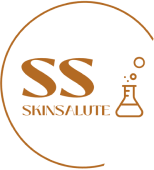The Myth Behind the ‘Inflammation Response’

Recently, there’s been a lot of discussion around the inflammatory response of the skin after aesthetic treatments. Is it a good thing or a bad thing?
After doing some research and speaking with several of my fellow skin experts, it’s clear that the industry has shifted. We now want that inflammatory response to occur because it's what stimulates your skin cells to act and regenerate.
Inflammation as a Catalyst for Skin Renewal
Take Skin Needling (also known as Collagen Induction Therapy) as an example. When we perform this treatment across the full face, our goal is to trigger new cell growth, new collagen, and new elastin. This controlled injury is what encourages the body to heal and regenerate.
Now, if we follow this treatment immediately with Infrared LED Light Therapy, we’re actually accelerating the wound response. The light calms the skin while sending biochemical messages to stimulate faster and more efficient healing.
However, there's a new perspective emerging:
- Use Infrared LED prior to needling, or in the lead-up to a skin needling course.
- Then, on the day of treatment, use Red LED Light Therapy straight after to stimulate fibroblast activity—key for collagen and elastin production.
Post-Treatment Protocol
After your needling session, I recommend a series of Red LED Light Therapy sessions every 2 days for 2 weeks. Why?
Because the remodelling process peaks every 48 hours.
Red light not only stimulates new fibroblasts, but it also:
- Increases blood supply
- Enhances circulation to the treatment site
- Supports faster and healthier tissue regeneration
This aligns with exciting new research showing that timing is critical to the health and quality of the cells being produced. If we push the skin to heal too quickly, we may compromise the durability and structure of those new cells.
Your Skin Remembers
What’s even more fascinating is recent research on skin stem cell memory.
It has been discovered that stem cells in the skin remember previous injuries. This memory helps them respond faster and more effectively to future wounds.
These stem cells, which live deep within the epidermis, take cues from inflammation. When inflammation occurs for the first time, they become sensitised. The next time around, they respond more rapidly and efficiently.
Scars may fade but your skin remembers. That’s how clever our body’s largest organ is.
Most of the cells in the epidermis slough off over time, but the resident stem cells remain, and they retain a biological memory of past inflammation. This helps explain why consistent treatment can improve your skin’s long-term resilience and healing ability.
In Summary: Let It Happen Naturally
So, what’s the truth behind the “myth of inflammation”?
We need to embrace the body's natural inflammatory and healing processes, not suppress them too soon. Allowing this response to occur:
- Improves treatment results
- Strengthens collagen and elastin production
- Enhances the skin’s ability to heal over time
When it comes to skin regeneration don’t rush the process. Let your body do what it’s designed to do.
